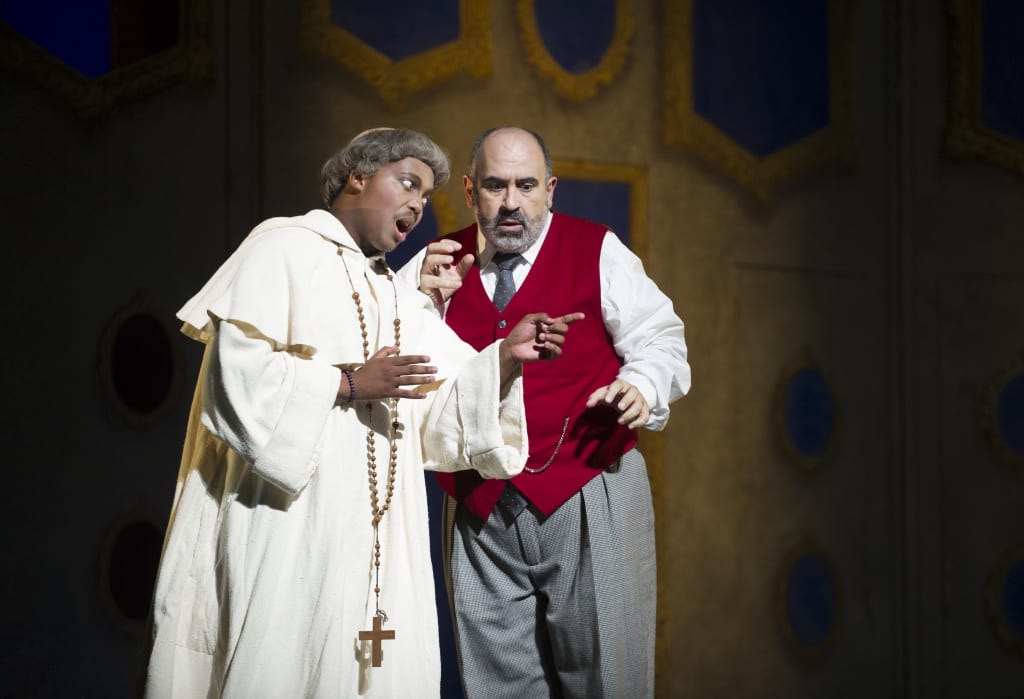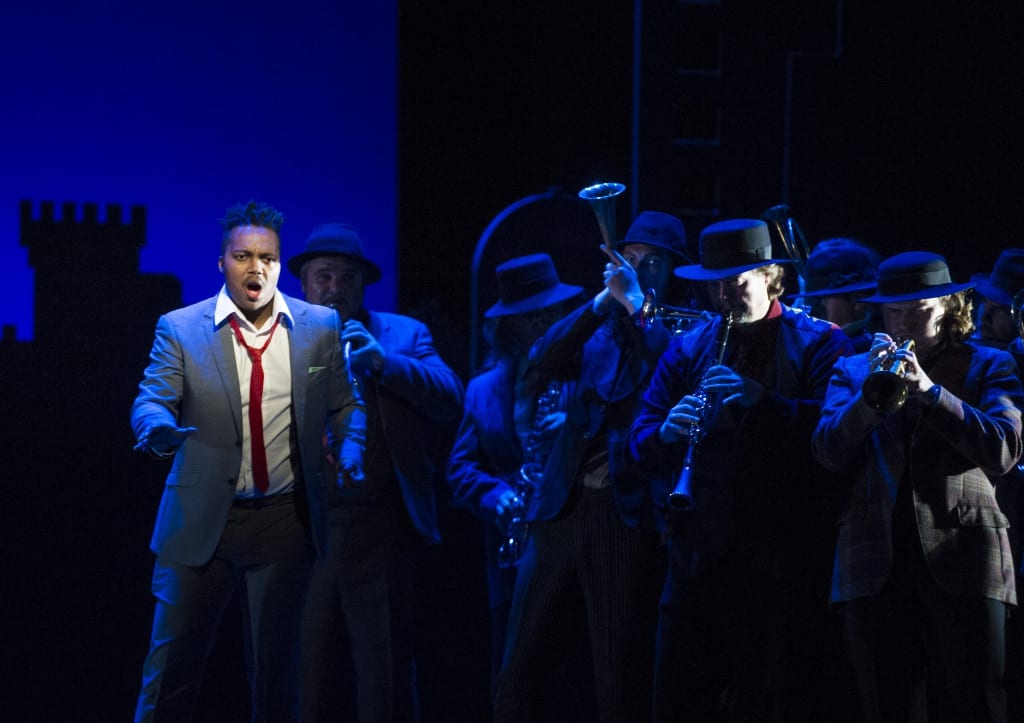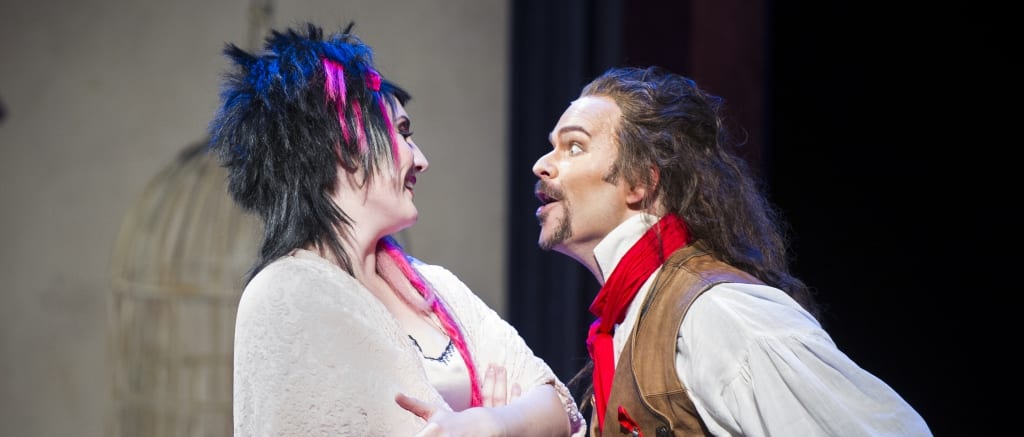The Barber of Seville is a remarkable opera. Now more than 200 years old – it was premiered in 1816 – it is a comedy that still has the power to provoke genuine laughter, even amongst opera goers who have seen it many times. It contains some of Rossini’s most inspired music which, in the hands of the best singers, can sound as fresh and exciting as it must have done in Rome two centuries ago. And it constantly inspires directors and designers to find new ways of bringing it to life for a contemporary audience. This splendid production, directed for the National Opera of Norway by Francois de Carpentries, ticks almost all the boxes and offers excellent comic drama and some top quality singing.
Count Almaviva is in Seville in disguise pursing a beautiful woman he first saw in Madrid. He meets the barber Figaro who tells him that the woman is Rosina, the ward of the miserable skinflint Dr Bartolo who keeps her shut way in his mansion. The rest of the opera is concerned with the various schemes cooked up by Figaro and Almaviva to lure Rosina out of the clutches of Bartolo.

The four central roles are well sung. Canadian Joshua Hopkins as Figaro strikes just the right note of money-fuelled cunning combined with sympathy for the frustrated lovers. He has the rich baritone voice needed to make the big impact with his famous first aria and manages a passable Elvis imitation later in the story. Of the lovers, Samantha Hankey makes the bigger impact as a punk-ish Rosina who is clearly going to be too much of a handful for her hapless and deluded guardian. She sang with power and poise and held the attention even on a crowded stage. Sunnyboy Dladla as Almaviva is not yet the real thing as a bel canto tenor but his youthful charm and willingness to sacrifice his dignity for some great comic moments won over the audience. Luciano di Paquale was a solid Bartolo, perhaps more the butt of the jokes rather than their source, but his rich bass voice often provided the bedrock on which other singers flourished.

Carpentries’ vision for the opera – and Karine van Hercke’s striking designs that underpinned it – is always visually arresting. There were almost too many comic ideas – some of which were brilliant, while others misfired. The stage is dominated by a giant pink diary – in the first act it rather gets in the way of the action but in the second act, as each page is turned, a giant “pop-up” object is revealed. It is a striking visual effect but not every object seems entirely relevant to the drama. And some of the stage business – the stepladder in the first scene and the torches in the final scene – is just not slick enough. But there are plenty of laughs and some moments of real pathos.
This was my first visit to Oslo Opera House and it is a superb venue – striking to look at across the fjord and comfortable and well-planned inside. I loved the seat back surtitles in a choice of languages. And in such a congenial setting this production is a joyous treat and conjures up some scenes of vintage Rossini.

